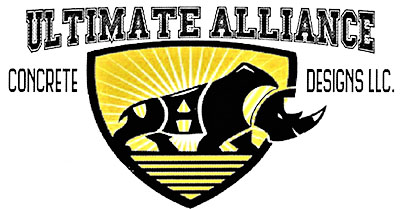Follow Us x
Frequently Asked Questions
What are CTi products?
CTI's main product line called the "Hallmark System", is a color integrated, modified acrylic cement product made of Portland cement, silica sand and a modified acrylic resin for its bonding agent. In addition, CTi offers product lines that are ideal for restoring, protecting and beautifying laminate countertops, garage and workshop floors, even vertical walls.
What kind of warranty do I get?
CTI offers a 10-year limited material warranty on its Hallmark System against, dramatic fading, delamination, and general product failure.
How thick is it?
We generally apply our systems on old concrete between 3/32" to 1/8". CTI's systems are thin layered cements which depend on adhesion through the use of modified acrylics.
What does it look like?
CTI's systems achieve a look, texture and color of any type stone or look you require. A base coat is applied that fixes any imperfections in the original concrete. A design is then laid over it and a hopper gun shoots on a textured layer over that. A final clear coat is put over the system that is nonporous and protects it as well as makes it very easy to maintain. Mold, mildew, motor oil, etc. can be sprayed off with a regular garden hose. Common detergents can be used to remove tough or repetitive latencies.
What colors does it come in?
We have a variety of standard colors to choose from. However, we can custom produce any color you wish for a minimal extra charge.
How long does it take to do an average job?
An average job will take 2 to 3 days. Larger, more complex jobs may take longer. Clean foot traffic is usually allowed within the same day.
Will cracks reoccur?
Though we do everything possible to treat cracks and do eliminate 90% of them, it is possible they may reoccur. If they do, it is usually in the form of a hairline, which is not objectionable as it is largely hidden in the texture. However, if a crack becomes too objectionable, it is easy to repair. Proper placement of tension cuts greatly reduces the chance of the crack returning. Check cracking is a natural phenomenon which occurs in rock, dried-out mud flats, paint, and concrete and in ceramic coatings. Cracks in the concrete may be structural or surface cracks. Surface cracks are generally less than a few millimeters wide and deep. These are often called hairline or check cracks and may consist of single, thin cracks, or cracks in a craze/map-like pattern. A small number of surface or shrinkage cracks is common and does not usually cause any problems. Surface cracks can be caused by freezing and thawing, poor construction practices, and alkali-aggregate reactivity. Alkali-aggregate reactivity occurs when the aggregate reacts with the cement causing crazing or check cracks. Structural cracks in the concrete are usually larger than 1/8 inch in width. They extend deeper into the concrete and may extend all the way through a wall, slab, or other structural member. Structural cracks are often caused by settlement of the fill material supporting the concrete structure, or by loss of the fill support due to erosion. The structural cracks may worsen in severity due to the forces of weathering.
Is CTi's Hallmark product the only product it manufactures?
Concrete Technology Inc. manufactures a full line of concrete beautification and restoration products for both residential and commercial use. CTI has different products that can be used over concrete floors, existing countertops, and even walls. In the commercial setting, Concrete Technology manufactures a line of tough, durable epoxy and urethane floor coatings that can protect concrete even in the harshest of environments.

